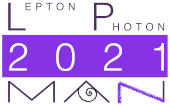Speaker
Description
The Silicon photomultipliers are extensively studied at room temperatures whereas only a limited research has been done on them at cryogenic temperatures. The recent R&D for underground low energy particle physics experiments involve SiPMs extensively as the prime photo-detectors due to their ability to enhance the sensitivity of the rare particle events. For cryogenic applications, the SiPMs by LFoundry are being characterised at LNGS, Italy have Dark Count rate of 0.1 cps/𝑐𝑚2-0.3 cps/𝑐𝑚2 over the range of 5-8V over-voltage with afterpulse probability upto 10%. The internal CrossTalk (iCT) on the other hand, increases significantly with over-voltage introducing an excess of noise that can spoil the resolution of the measurement. Specific electronics was designed to test 1cm^2 SiPMs to calculate the iCT. A dedicated Poissonian laser model was constructed to satisfy the observed data also in comparison with other existing models. The PDE is another vital parameter that was modelled for cryogenic temperatures down to 87-77K through the direct measurements of triggering probability. For this purpose, a separate setup with two 1 mm^2 SiPMs were mounted and cooled down to 77K and then equally illuminated by different wavelengths' lasers. With the careful modelling of depletion region and absorption length in the SiPM lattice structure, SiPMs can be customised for cryogenic applications with PDE close to 60%. Additionally, external CrossTalk (eCT) phenomena was also explored, where a photon generated can escape the silicon bulk, reflected and reaches other SiPMs in the setup. This effect could be significant for TPCs in Dark Matter detectors where photo-detectors the top and bottom array face each other. Through frequentist approach of likelihood analysis, the parameters to extract the eCT probability in the setup of 4 SiPMs are obtained for different reflector materials. In this talk, SiPM noise contributions will be elaborated. The results of studies done for such noises and SiPM performance at cryogenic temperatures will be highlighted.
